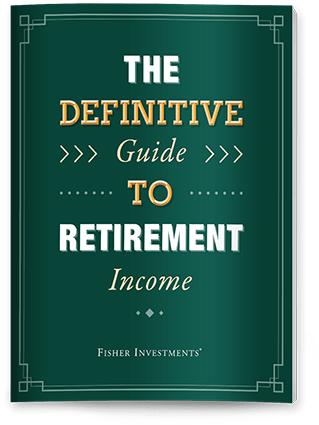Personal Wealth Management / Financial Planning
The Early Personal Finance Look-Ahead to Yearend
Avoiding procrastination can make the holidays much more pleasant.
Do you hear that? It is the countdown to yearend. Yes, we know it isn’t even Halloween, but hear us out. There may be a little more than two months left on the calendar, but between the trick-or-treating, Thanksgiving, holiday festivities and all the other things that compete for our time in late autumn, it is going to go fast. So to us, this seems like a very good time to take advantage of shorter daylight and long cozy nights to start seeing to some important personal finance items. Like these!
Check your retirement account and HSA contributions and top-up if needed and able.
Do you have a 401(k)? IRA? Health savings account (HSA)? Or any other tax-deferred savings vehicle? This is a good time to check your total year-to-date contributions and square them with the annual contribution limits. What are those contribution limits? Glad you asked.
- For 401(k)s: $22,500, or $30,000 for folks age 50+
- For IRAs: $6,500, or $7,500 for the 50+ set
- For HSAs: $3,850 for an individual or $7,750 for family coverage, plus $1,000 for folks age 55+
There are great reasons to max out your contributions if you are able. For one, 401(k) and HSA contributions are often tax-deferred, making them a handy way to reduce your tax bill this year. If you aren’t covered by a workplace retirement plan and your income isn’t too high, traditional IRA contributions are also tax-deferred. Roth 401(k) and IRA contributions aren’t, but the money grows tax-free and isn’t subject to income taxes when you withdraw it—which, for many folks who don’t materially benefit from reducing their taxable income, is a good tradeoff.
The second reason: Compound growth. The more you contribute, the more your savings can participate in the stock market’s growth, compounding throughout the remainder of your working years and into your retirement. This can do wonders to help cover your living expenses and, in HSAs’ case, late-life medical needs. Saving and investing now is a wonderful gift to your future self.
Take your required minimum distributions.
If you turned 72 on or before December 31, 2022, you must take at least a certain amount out of your tax-deferred retirement account each year. This is your required minimum distribution (RMD), and it is Uncle Sam’s way of clawing back some tax revenue from your savings. The amount you owe is based on your age, and you can calculate it using the IRS’s life tables—or just ask your financial professional to provide it to you.
If you are under age 72 but inherited an IRA, you may also need to take an RMD depending on the original account holder’s age and some other circumstances. The rules here are a bit complex, so we suggest talking to your tax pro to see what applies to you. Note, too, that the IRS granted a special RMD waiver for IRA beneficiaries of accounts whose original owner died on or after January 1, 2020 and had already reached the RMD age.
Taking your RMD is pesky but important. If you don’t, the IRS imposes stiff penalties, adding insult to injury. If you need the money for living expenses, factor it into your budgeting. If not, you can shift the money from your retirement account to a taxable brokerage account, either as cash or a stock/bond transfer. Or, if you are charitably minded and wish to reduce tax exposure, you can also use a Qualified Charitable Distribution to satisfy your RMD. These gifts, straight from your retirement account to a charity, satisfy your RMD and spare you the pain of paying taxes on the distributed amount. Given the extra paperwork this can entail, it is really best not to wait till the last minute on such moves.
Consider a Roth IRA conversion.
Nothing lasts forever, and that includes tax cuts. To comply with budget deficit rules, Congress made 2017’s income tax bracket changes temporary, and the sunset is now on the horizon. Unless Congress extends the cuts, tax brackets will return to pre-2017 levels in 2026, sticking many households with a tax hike (and sticking all of us with a lot of headlines griping about a Fiscal Cliff).
So if you have been considering converting a traditional IRA to a Roth, you might wish to get cracking so that you can enjoy the lower tax rate while you have it (converting requires paying income taxes on the full amount). Especially if your income is high enough that the converted amount would be taxed at the highest rate, which will jump from 37% to 39.6% in 2026. The difference may not seem like much, but paying a higher rate means less principal to invest and grow.
Here is a hypothetical: You have $300,000 to convert and will pay the top marginal rate. If you wait until 2026, the tax bill would be $7,800 higher. But if you invested that $7,800 today and it returned 8% annually (a bit below stocks’ historical average), it would be worth nearly $78,500 after 30 years. Markets don’t move in straight lines, nor do they achieve near-average returns year in, year out, but you get the point: Compound growth can make even small tax savings add up over time. A lot. Even if you don’t invest it, $7,800 in your pocket to spend, save or whatever is certainly preferable to $7,800 forked over to the Federal Government.
Yes, 2026 is a few years away. But it pays to plan early. Some folks might find it most beneficial to spread conversion over a few years to minimize the tax bill, so starting now could be wise. Talk to your tax pro early to identify a plan.
Check on your household budget.
You don’t need us to tell you everyday expenses have shifted over the past two years. Chances are you are spending a lot more on food, gas and other essentials—not to mention all the things that make life fun. Your income has probably also shifted, either through changes to your wages or salary or Social Security’s Cost of Living Adjustment (COLA) if you have started receiving your benefits. Next year’s COLA is now known, as it is set by a subindex in the July - September Consumer Price Indexes. Next year, benefits will rise by another 3.2%.
So it is probably wise to take some time to tally all your monthly expenses over the past year, square them against your income sources and map out some expectations for 2024. On the expense side, categorize your line items in two buckets: essential and discretionary. Essential would include food, gas, mortgage/rent, healthcare premiums, utilities and other basics, while discretionary would be entertainment, travel, gifts and other fun-but-not-necessary items. On the income side, include any earned income, Social Security benefits (if applicable), passive income (e.g., from rental properties) and any investment income and cash flows you anticipate taking.
And then, take an honest look. Has your spending matched your assumptions? Are you going overboard unexpectedly in certain areas? If so, might cutting back be beneficial? Do you have unused streaming services and other subscriptions that are needlessly bleeding money? Or have you scrimped unnecessarily and starved yourself of some fun? Don’t self-flagellate, but take the opportunity to make changes if doing so is beneficial.
If you would like to contact the editors responsible for this article, please message MarketMinder directly.
*The content contained in this article represents only the opinions and viewpoints of the Fisher Investments editorial staff.
Get a weekly roundup of our market insights
Sign up for our weekly e-mail newsletter.

See Our Investment Guides
The world of investing can seem like a giant maze. Fisher Investments has developed several informational and educational guides tackling a variety of investing topics.





